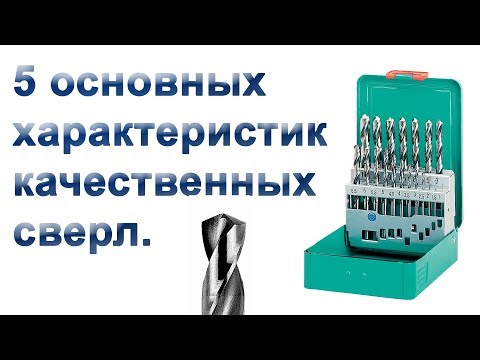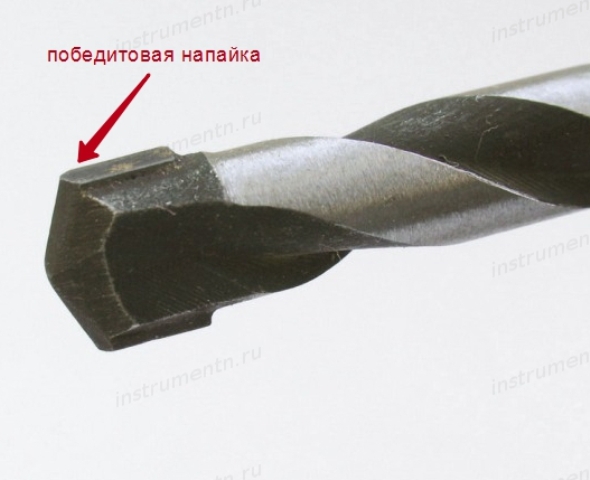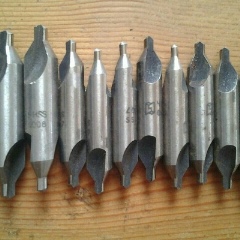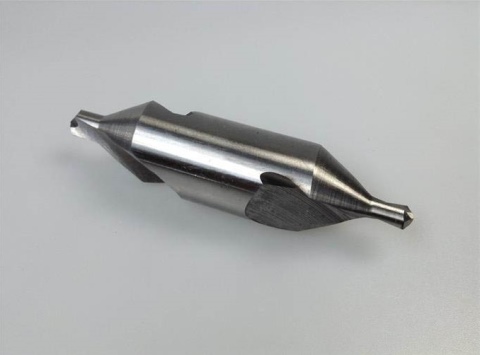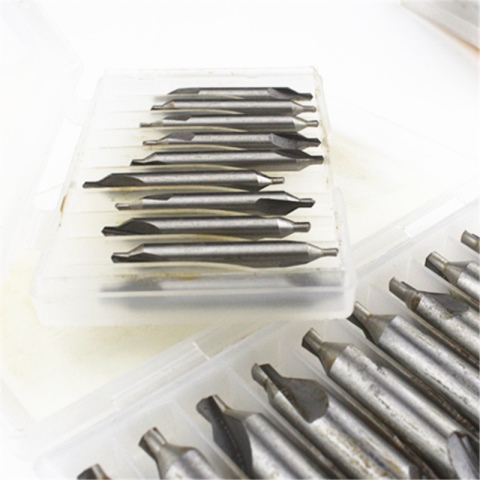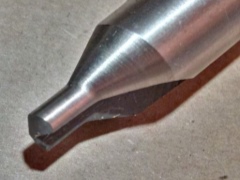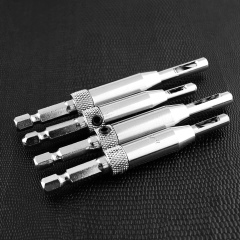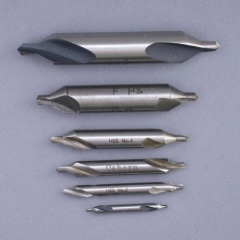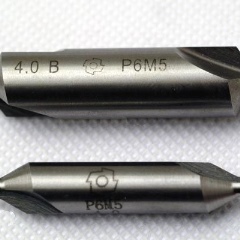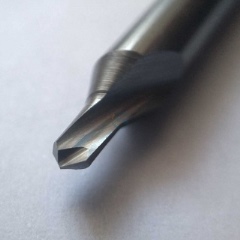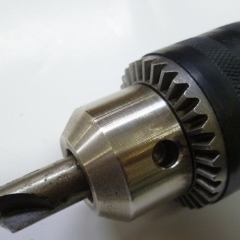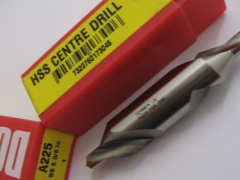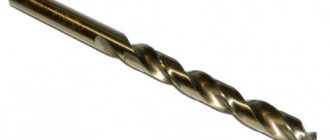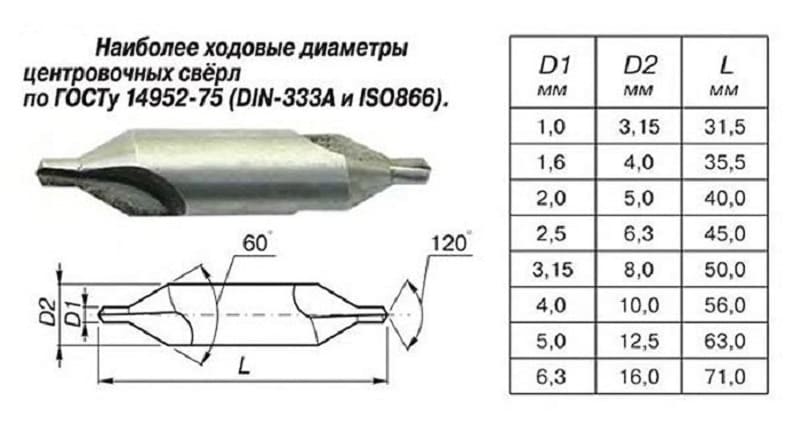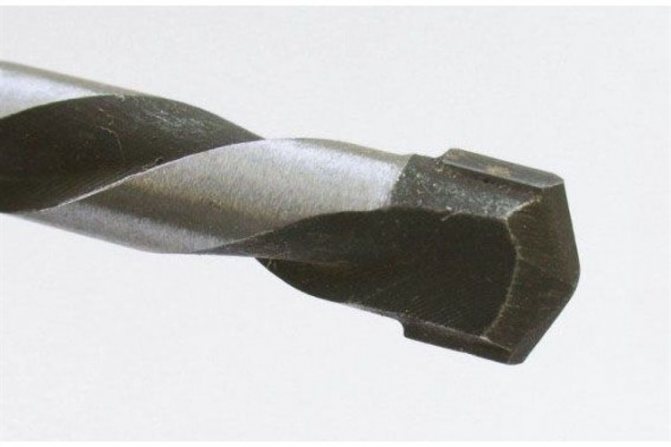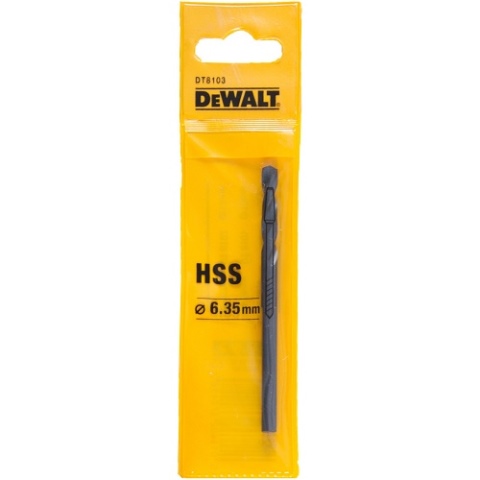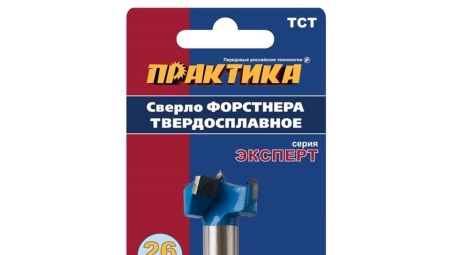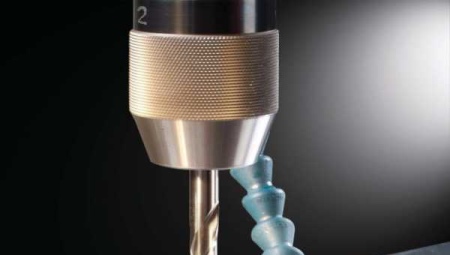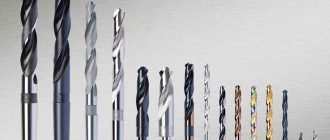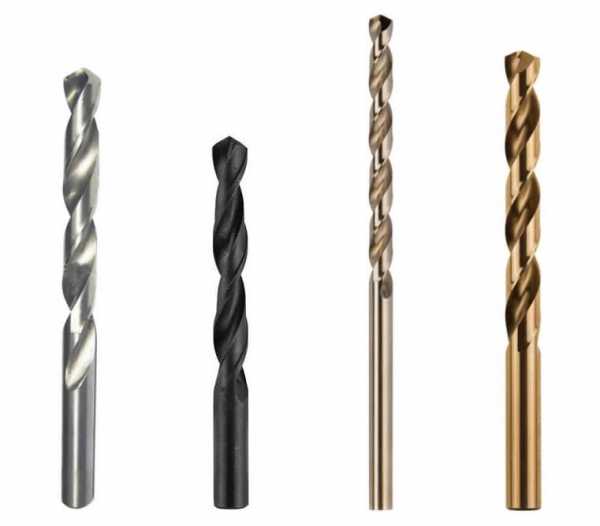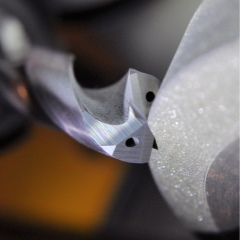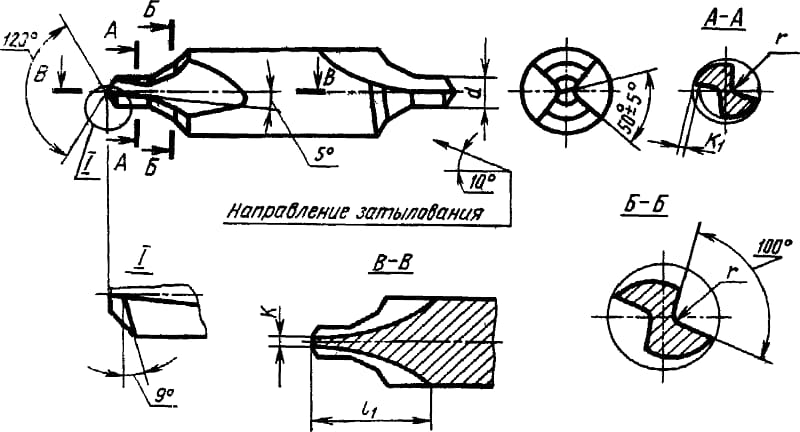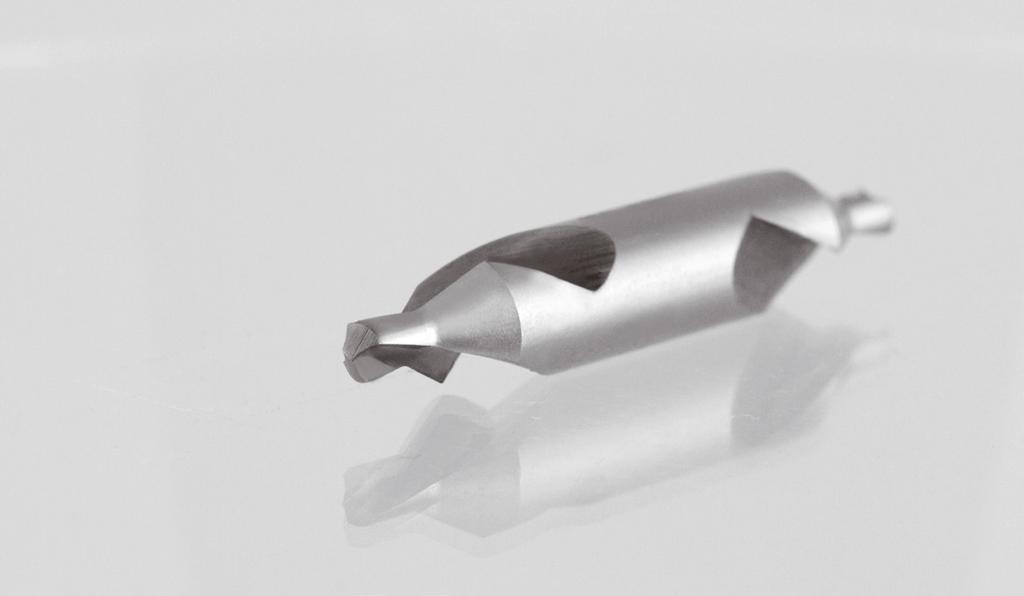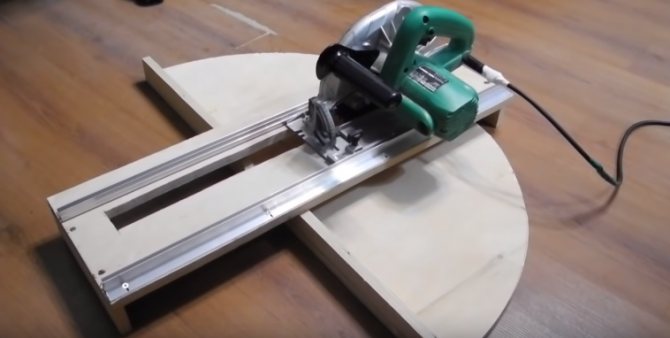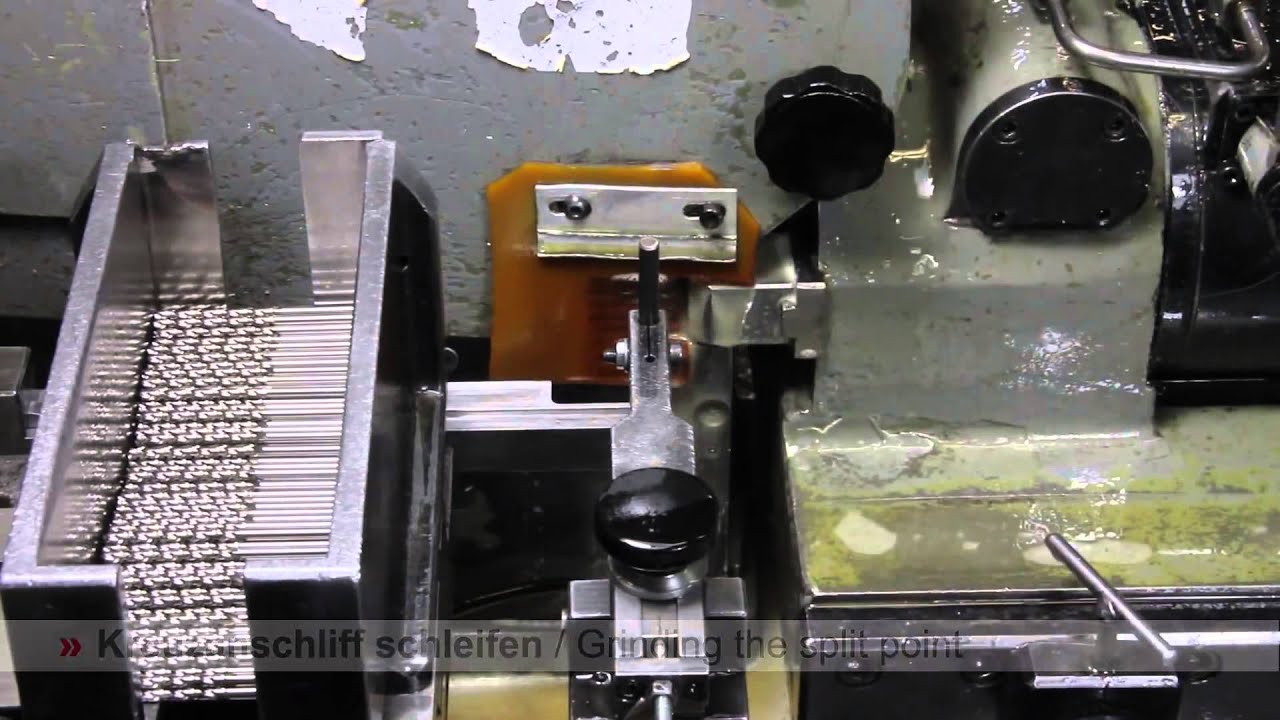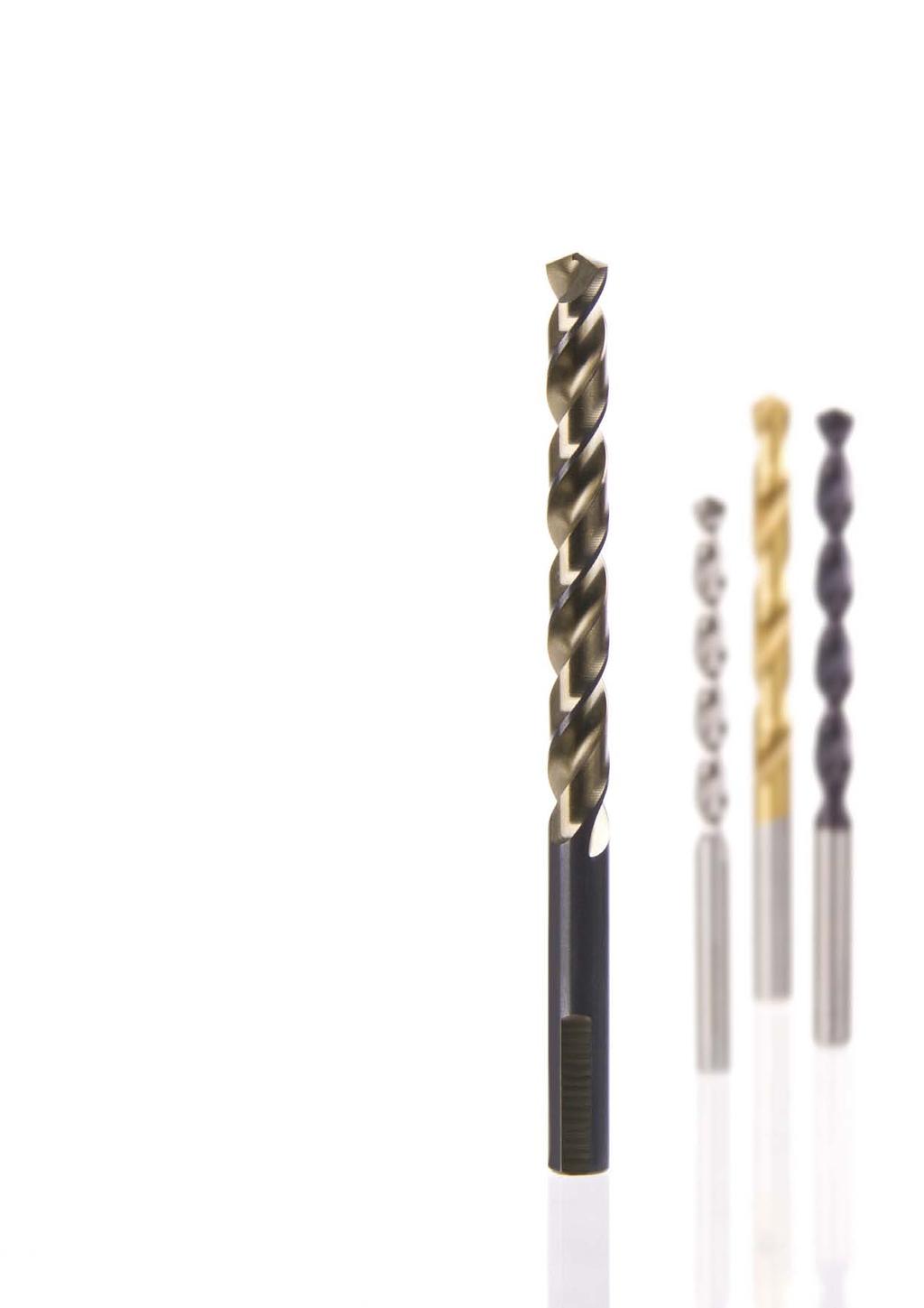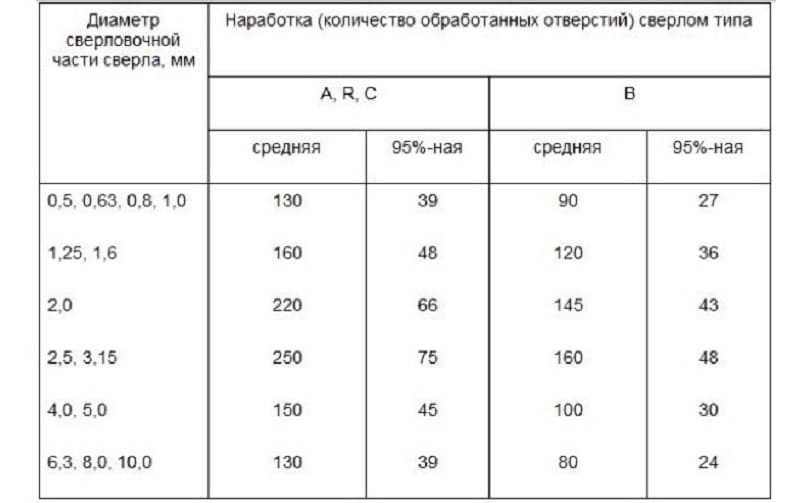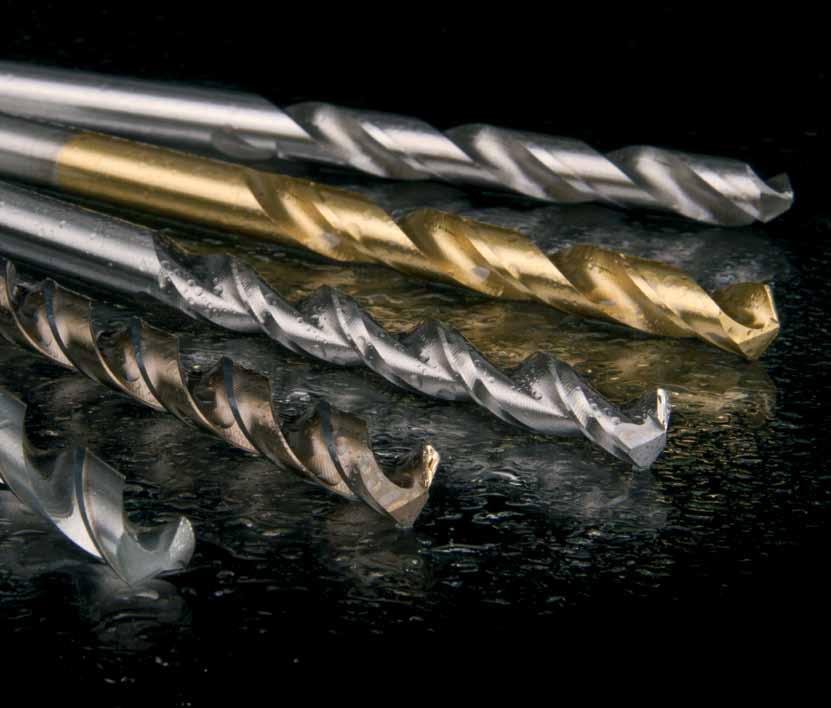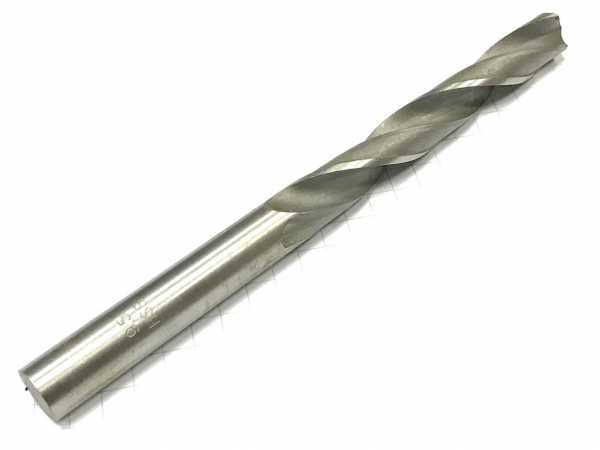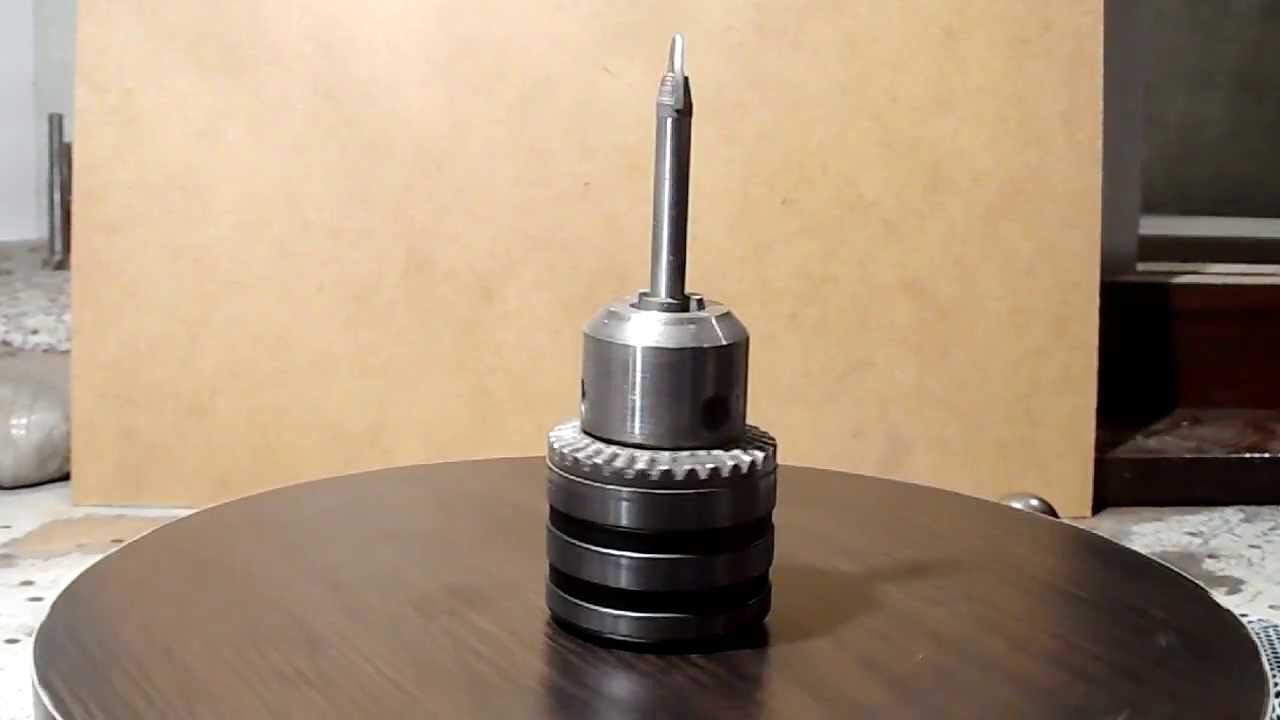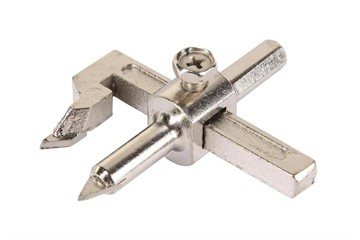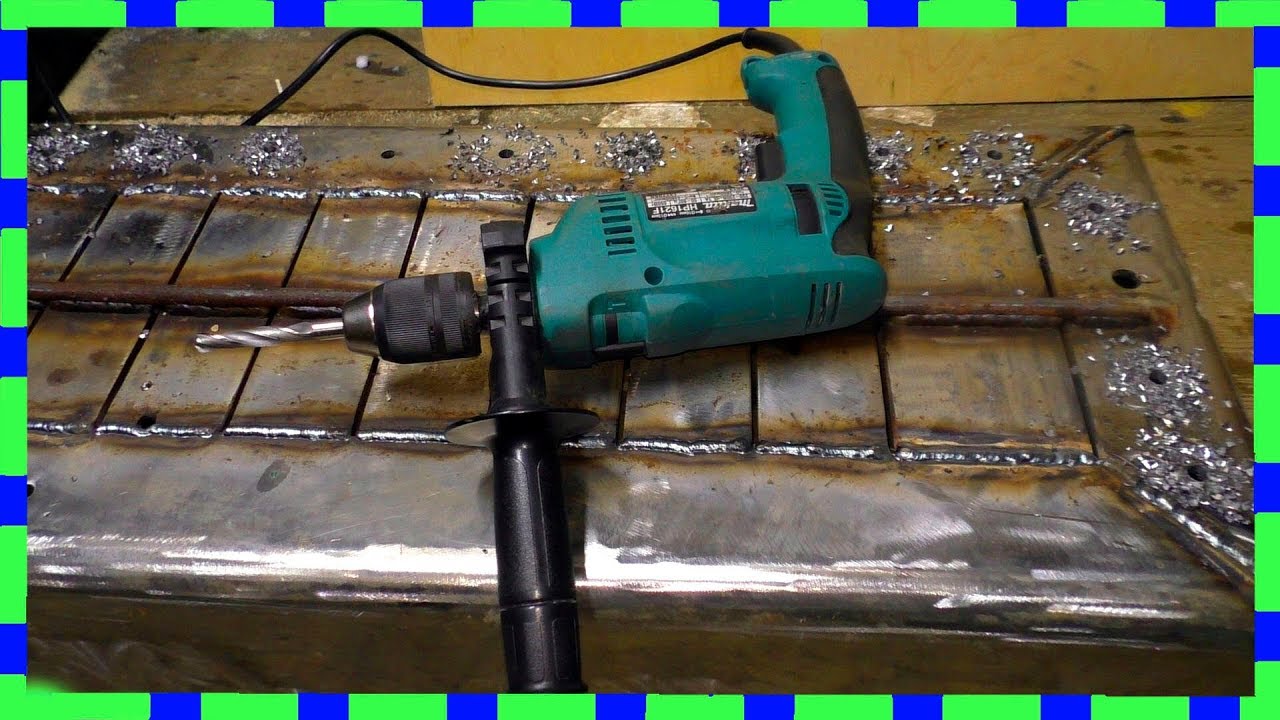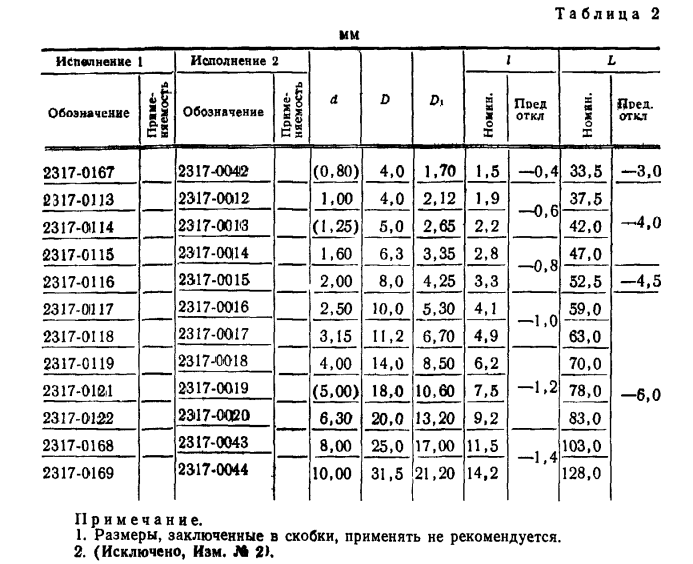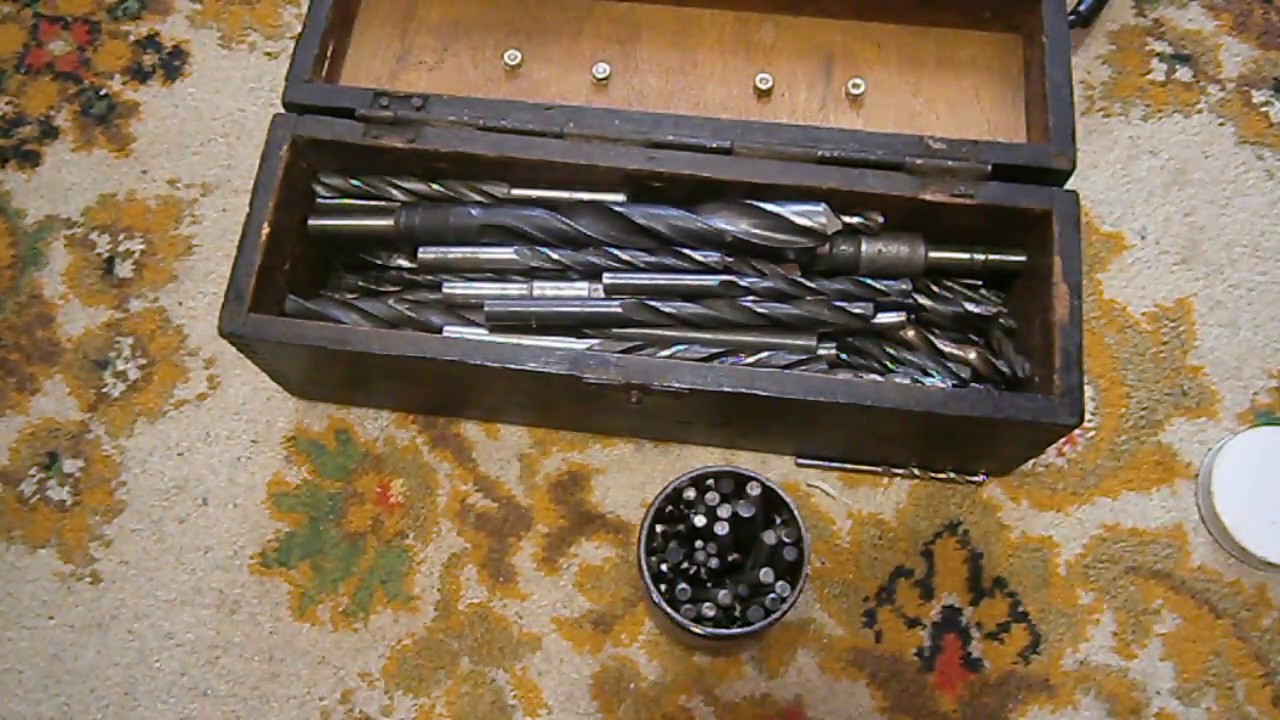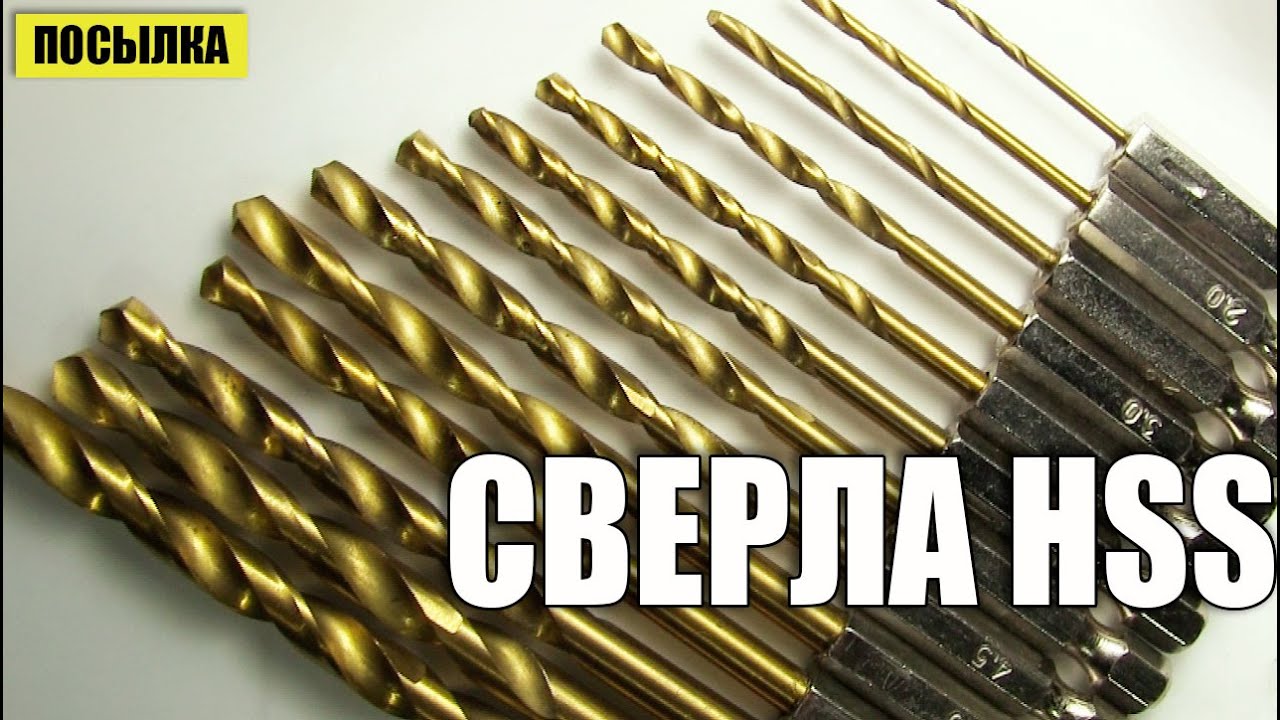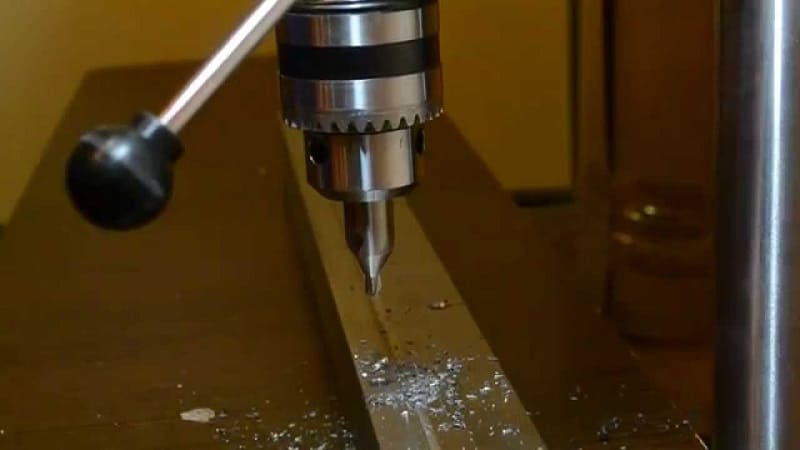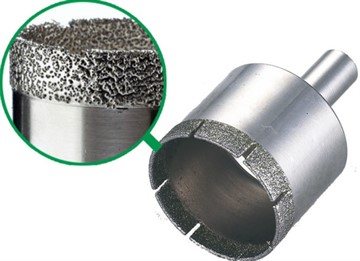Primary requirements
Drills, which are designed to obtain centering holes, are made from. According to the requirements of the regulatory document, this material must provide the following hardness parameters of the working part of the tool with a diameter:
- less than 3.15 mm - 63–65 HRC;
- more than 3.15 mm - 63–66 HRC.
A separate category of center drills, the material of manufacture of which contains cobalt (5%) and vanadium (3%), must have a hardness at least one unit higher than the above parameters.
The diameter of the center drills may have deviations, the limiting values of which are also specified in the regulatory document:
- for tools with a diameter over 5 mm - +0.15 mm;
- 2.5–5 mm - +0.12 mm;
- 0.8–2.5 mm - +0.1 mm;
- up to 0.8 mm - +0.05 mm.
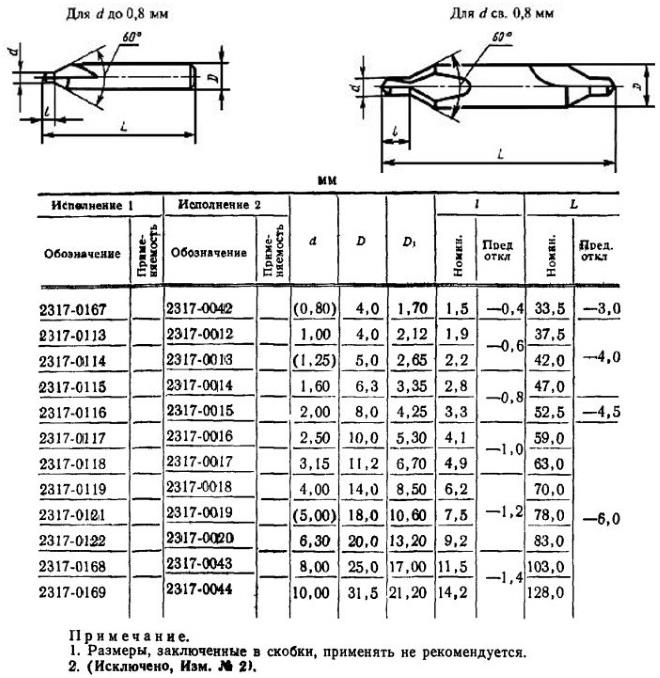
Geometrical dimensions of center drills
The regulatory document also lists the requirements for the surface condition of drills related to the centering type: there should be no cracks, nicks, tarnishing or rough edges on it. It is assumed that tarnishing colors may be present in the area of the grooves - in the places where the grinding wheel exits.
The standard also specifies the criteria for the failure of the centering tool, which for drills with a diameter of up to 3.15 mm occurs in the event of breakage, and for a tool with a diameter of more than 4 mm - in the event of wear of its rear surface by the amount specified in the corresponding tables.
The difference in feather widths should be within the following ranges for drills with a diameter:
- up to 3.15 mm - no more than seven hundredths of a millimeter;
- more than 3.15 mm - no more than one tenth of a mm.
Selection Tips
The choice of a center drill will depend on what hole dimensions you want to make.
The weight of the workpiece, which is fixed in the metalworking machine, is also taken into account. Sizes, depending on the weight of the workpiece, are regulated by GOST - the greater the mass of the part, the larger the drill diameter is needed
Each drill diameter has 2 versions, so its type is selected depending on the requirements for the roughness of the hole walls.
The combined centering drill is selected according to the requirements for the type of holes specified in the design drawings. To determine the quality of a tool, there are a number of items for which it must be checked.
Compliance with Rockwell hardness standards. The center drill data is indicated in its technical data. A quality tool has an indicator of at least 63-66 HRC. Exceeding these standards leads to the fact that the drill will be fragile and short-lived. Understated standards will cause the tool to become dull very quickly.
Conformity of the drill to the declared diameter. You can check this with a micrometer. The elongated working pen of the drill is to be measured - and if its diameter exceeds the permissible error rates, it will not work to obtain a hole of a given size with this tool.
Determine product integrity
This is especially important for its cutting part, as well as for the cone-shaped crown. There should be no cracks or dents on the tool in place of the working surfaces.
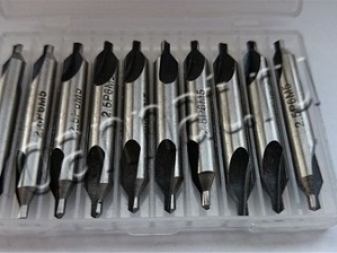
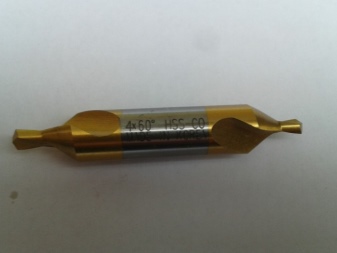
The drilling tool gradually changes the angle of the cutting plates during operation. This leads to a decrease in the speed of the cut and excessive heating of the drill. Over time, any drill requires sharpening, which must be done while maintaining the angle of inclination of the cutting edge.
Tricks at work
If the extractor did not succeed in removing the fragment of the hairpin, then it removed it with a tap. To do this, the hole drilled along the axis of the pin was drilled a little more and the thread was restored with a tap.If the diameter of the hole drilled along the axis of the stud was chosen correctly, then when passing through the tap, the remnants of the threaded part of the old stud are chipped off and removed. The main thing is to correctly calculate the hole diameter. This is easy to do, knowing the diameter and pitch of the thread. For example, for a thread M8 × 1.5 mm from the diameter of the thread, you need to subtract the pitch (8 - 1.5 = 6.5 mm) and reduce it by another 0.5 ... 0 , 6 mm. That is, the drill should have a diameter of about 6 mm so that during drilling it does not touch the ridges and valleys of the thread on the stud fragment and leaves a minimum of metal that the tap can easily crumble and remove. It is possible to enumerate for a long time various examples of "inappropriate" use of a center drill - there are many of them. My advice to DIYers: get this useful tool in your workshop and you won't regret it. It is not so difficult to purchase such drills in specialized tool stores and on the market, they are on sale quite often.
Features of different types of drill sharpening
The correctness of the chosen method depends on an accurate assessment of the wear of the individual elements. The following are subject to the greatest wear:
- back or front surface;
- jumper;
- set angles;
- chamfer
Depending on the degree of wear of one of the parameters or several at the same time, a type of sharpening is selected that can eliminate these disadvantages.
To achieve a high-quality drilling result, it is necessary to choose the correct diameter of the drill, the shape of the cutting edge. To maintain it in working order, to give it the required shape, you should choose the right way (type) of sharpening.
The types used are indicated by accepted abbreviations and are divided into the following categories:
- NP - assumes sequential sharpening of the transverse edge. This allows you to reduce its length, thereby reducing the magnitude of external loads, and increase the life of the drill.
- NPL - this type involves the processing of a transverse edge and ribbon. Which leads to a decrease in the transverse size of the ribbon. This processing helps to obtain the desired clearance angle. This reduces the frictional force of the cutting edge against the metal surface;
- DP - belongs to the category of double sharpening. Correct application results in one transverse and four additional cutting edges.
- DPL - such processing of drills for metal involves sequential sharpening of the tape. As a result, better conditions for heat dissipation are created, reliability and durability are increased.
All types of processing are aimed at creating optimal conditions for drilling. The description of the rules and characteristics of sharpening are established by the relevant standards. All sharpening parameters drills for metal summarized in a single table. It shows the geometry of the applied cutting edge shapes for various cutting conditions. The listed types of sharpening allow high-quality restoration of the parameters of the cutting part of the tool with a diameter of up to 100 mm.
When applying these methods, it is very important to take into account the parameters of the metal from which the tool is made. This is necessary for the correct selection of the grinding tool (grinding wheel)
For example, for high-quality restoration of drills made of high-speed steel, experts advise using an alumina grinding wheel. If the drill is made of carbide materials, it is advisable to cut it with a diamond wheel. The operation of restoring the parameters leads to significant heating of the part, especially its cutting edge. Therefore, this process must be carried out in stages using a coolant.
Particular attention should be paid to restoring the basic parameters of the drill in a home workshop. It is necessary to ensure the high quality of the following indicators:
- the same length of edges and tape (measurement can be made with an existing measuring tool);
- sharpness of both edges (check is carried out visually);
- the values of both angles (front and rear).
To simplify the last task, many craftsmen make independent templates that provide the required sharpening angle. Exact observance of these parameters, correct sharpening of the lintel significantly increases the service life of the drill.
However, there are certain types of drills, the specificity of which greatly complicates the sharpening process. Problems with the sharpening twist drills or step drills are associated with the complex geometry of their design. Therefore, such tools are sharpened on special machines using the developed equipment.
Particularly difficult is the sharpening of step drills for metal. Such sharpening can only be carried out with the use of special tools and great experience. However, it should be noted that the bulk of such a tool cannot be re-sharpened at all.
Neither method is applicable to diamond drills or other hard bits.
Main parameters, technical characteristics by type
It is important for everyone who chooses a centering drill to familiarize themselves with its detailed description, because this is a very accurate tool used by professionals. General standards for center drills can be found in GOST 14952-75, where their marking rules, standard sizes, and requirements for drills are indicated.
General standards for center drills can be found in GOST 14952-75, where their marking rules, standard sizes, and requirements for drills are indicated.
Center drill type
There are four main types of this type of drill:
- Type A - for creating centering holes in which the taper angle is 60 °, but there is no safety taper.
- Type B - for creating centering holes in which the taper angle is 60 °, and there is also a safety taper with an angle of 120 °.
- Type C - for creating centering holes in which the taper angle is 75 °, but there is no safety taper.
- Type R - for creating centering holes with an arc surface.
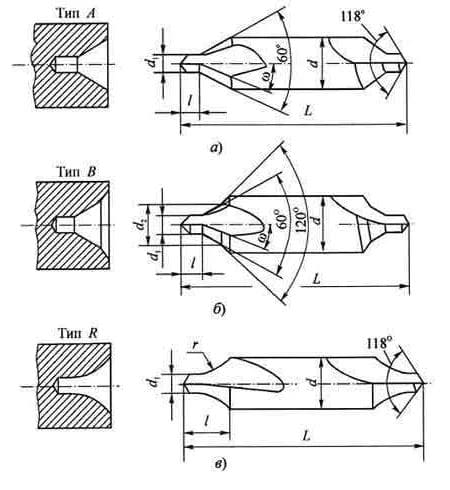
The centering drill, according to GOST 14952-75, must have a working diameter of 0.5 - 10 millimeters. In all of the above four types, there are two versions, the choice of which depends on the required roughness of the hole walls.
Technical specifications
Center drills for metal, in addition to their type (A, B, C, R) and the diameter of the working part, differ in a number of parameters (they are described in the same GOST 14952-75). Their design can be one-sided and two-sided. They are usually made from materials such as alloy steel, carbon steel, high speed steel or alloy. The length is from 21 to 108 millimeters, the landing diameter is from 3.15 to 31.5 mm, the length of the working part of such a drill is from 1.0 to 9.2 millimeters, and the hardness of the working part varies from 63 to 66 HRC.
Center drill selection
Note that when choosing a center drill, you must pay attention to the diameter. There is one significant difference with "conventional" drills.
The diameter of a conventional drill is determined by the thickness of its shank, and in the case of a center drill, it is determined by the thickness of the cutting edge of the drill.
Marking and metal from which the center drill is made
Center drills are also marked in accordance with GOST 14952-75. As mentioned above, in their designation they have the letter (A, B, C or R).
The centering drill in accordance with GOST 14952-75 assumes the marking "A" and "B" if it is intended to create a hole with an angle of 60 degrees. Here the difference lies in the presence of a safety cone (letter "B") or its absence (letter "A"). Marking "C" is used for drills that make holes at an angle of 75 degrees (there is no safety cone), and the letter R is for drills that make holes with walls in the shape of an arc.
For example, consider a centering drill with a diameter of 1.0 mm.
If the drill is of type "A" and is made in the first version, then it will be marked 2317-0101 GOST 14952-75, and if in the second version, then 2317-0001 GOST 14952-75. Here "2317" denotes the specific design characteristics of the drill required for its operation, and 0101 is the serial number of the standard size according to the factory tables.
Instruments belonging to group "B" are marked differently (in particular, if they are made in the first version, then as "2317-0113", and if in the second - "2317-00-12"). Drills of type "C" are designated as "2317-0124" (in the first version) and as "2317-0022" (in the second version), and the R group as "2317-0027". Let us remind you once again that this is all true if the drill diameter is 1 mm.

Also, GOST 14952 75 assumes that such tools will be made of tool steel P6M5, its foreign analogue HSS or high-speed steel P9. However, the steel grade in the marking of center drills may not be indicated.
Choosing drills for metal depending on their type and purpose
Choosing a drill for metal, the master, first of all, looks at its appearance.
Twist drills
The most popular type. These simple cheap drills are designed for blind and through holes of certain diameters. The working part is a cylindrical rod with two cutting edges. The grooves are used for chip evacuation.
Photo # 1: twist drills for metal
Conical drills
The working parts are shaped like cones. In everyday life, such drills for metal are rarely used. They are best suited for specialty machines and two-hand drills. With their help, holes are made with diameters from 6 to 60 mm.
Photo # 2: metal cone drill
How to choose a step drill for metal
Conical step metal drills are best for making holes in thin sheets. These tools look like this.
Photo # 3: Step drill bit for metal
As you can see, the tool does not need to be changed when making holes of different diameters in thin sheet metal.
Center drills for metal
Center drills for metal are designed for making centering holes in workpieces. They are necessary for fixing products on various special machines.
Photo # 4: Center drills for metal
Left hand drills
Left hand metal drills are specially designed for drilling bolts and screws with broken heads. This cannot be done with conventional drills. The bolt or screw will twist.
Photo # 5: Left hand drill for metal
Core drills for metal
Core drills or ring cutters are used to quickly drill large holes in metal workpieces (from 15 to 100 mm). The principle of operation of such tools is based on crown milling. It consumes 4–12 times less energy than conventional drills.
Photo # 6: core drills for metal
These drills are designed for installation on drilling, milling and turning machines. For manual work, use special tools with QuickIN Plus clamps.
Pre-assembled drills
Top assorted drills are excellent for machining cast iron, structural steel and hard forgings. With the help of these tools, shaped and stepped holes of large diameters are made. Perforated drills are made up of holders to which pentahedral cutting inserts of various sizes are attached. They have special grooves for the removal of chips.
Photo # 7: Prefabricated feather drills with inserts
Solid carbide drills
Solid carbide drills are made of extra strong materials. There are the following types of such tools.
- Monolithic.
- Welded.
- With special plates.
Photo # 8: Carbide drills with inserts
Such tools are purchased for machining workpieces made of heat-resistant steels and titanium alloys.
Next, we will tell you how to choose a quality twist drill for metal.
Guidelines for choosing a center drill
There are no universal center drills. The centering drill must be selected based on a number of factors.
Let's list them:
- First, you need to take into account the material with which the work will be carried out, as well as the diameter and length of the working part, the material of the drill, the taper and the type of centering hole.
- Secondly, if it is planned to center the part before drilling it, the centering drill must be selected with a smaller diameter than the hole size after the final drilling. And vice versa, if you need to drill a screw that is stuck tightly, which does not lend itself to a screwdriver, then the drill needs to be selected with the same diameter (or more) of the screw that needs to be drilled.
- Many people use center drills to drill thread holes. In this case, it is necessary to select the diameter of the drill so that it is less than the diameter of the thread. Otherwise, it will simply not be possible to cut it.
- It is also necessary to take into account the requirements for the roughness of the hole walls, since center drills are available in two versions.
Drill selection parameters according to GOST
After reviewing the GOST for a self-centering drill, it becomes obvious that you need to pay attention to a number of characteristics, such as:
- Appearance. It's simple: there should never be any scratches, dents or any visible mechanical defects on the instrument.
- Accuracy. We carefully look at this indicator, because it depends on it what the tolerances of the diameter of the drilled holes will be. For example, if the diameter of the working area of the center drill is less than 8 millimeters, then the deviation should not exceed 0.05 millimeters.
- Hardness. If this parameter is deviated, the drill will not last long. If it is low, then the drill will not be stable enough during operation, and if it is too high, then the drill will be brittle. The hardness should be between 63 and 66 HRC according to the Rockwell hardness scale.
- Length. This parameter is responsible for the performance of the drill. It must be selected based on the length of the workpiece.

